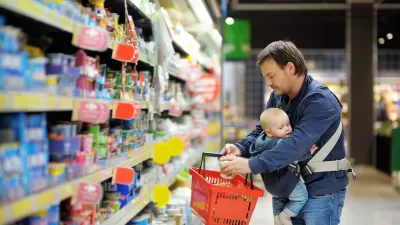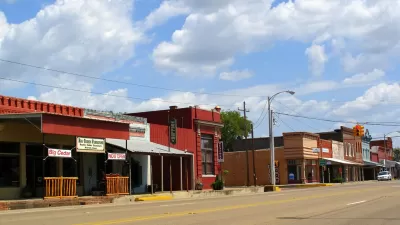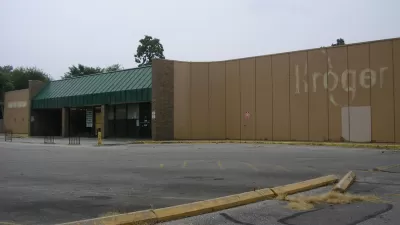Small entrepreneurs are working to combat 'food deserts' by bringing fresh, healthy foods to communities lacking access to major grocery stores. But price continues to be a major factor in people's food choices.

In an effort to fight what some are calling "retail redlining," entrepreneurs across the country are opening corner stores focused on providing fresh, healthy foods to their communities, and, in some cases, gaining institutional support. As reported by Patrice Worthy, "Washington DC recently launched a $3m initiative to bring 'new food and retailers' to the wards 4, 7 and 8 in the city."
Small business owners need support to stock healthier foods, as "[m]any small businesses like corner stores don’t stock produce because it’s highly perishable and has a small profit margin with a lot of waste."
Despite their romanticized appeal, "[t]hese community corner stores are only a small piece of what’s needed to give more people access to healthy food." According to Ellen Vollinger, legal director and director of advocacy on behalf of the Supplemental Nutrition Assistance Program (Snap/food stamps) at the Food Research and Action Center, they key is the federal SNAP program, because "[t]he biggest barrier to healthy food is price according to a June report released by the US Food and Nutrition Service." Under new rules announced by the Biden administration, average SNAP benefits "which were $121 per person before the pandemic, will rise by $36 permanently." Meanwhile, corner stores can fill a critical gap in access for underserved communities.
FULL STORY: Candy v kale: healthy food comes to US corner stores in fight against ‘retail redlining’

Alabama: Trump Terminates Settlements for Black Communities Harmed By Raw Sewage
Trump deemed the landmark civil rights agreement “illegal DEI and environmental justice policy.”

Study: Maui’s Plan to Convert Vacation Rentals to Long-Term Housing Could Cause Nearly $1 Billion Economic Loss
The plan would reduce visitor accommodation by 25% resulting in 1,900 jobs lost.

Why Should We Subsidize Public Transportation?
Many public transit agencies face financial stress due to rising costs, declining fare revenue, and declining subsidies. Transit advocates must provide a strong business case for increasing public transit funding.

Paris Bike Boom Leads to Steep Drop in Air Pollution
The French city’s air quality has improved dramatically in the past 20 years, coinciding with a growth in cycling.

Why Housing Costs More to Build in California Than in Texas
Hard costs like labor and materials combined with ‘soft’ costs such as permitting make building in the San Francisco Bay Area almost three times as costly as in Texas cities.

San Diego County Sees a Rise in Urban Coyotes
San Diego County experiences a rise in urban coyotes, as sightings become prevalent throughout its urban neighbourhoods and surrounding areas.
Urban Design for Planners 1: Software Tools
This six-course series explores essential urban design concepts using open source software and equips planners with the tools they need to participate fully in the urban design process.
Planning for Universal Design
Learn the tools for implementing Universal Design in planning regulations.
Smith Gee Studio
Alamo Area Metropolitan Planning Organization
City of Santa Clarita
Institute for Housing and Urban Development Studies (IHS)
City of Grandview
Harvard GSD Executive Education
Toledo-Lucas County Plan Commissions
Salt Lake City
NYU Wagner Graduate School of Public Service





























